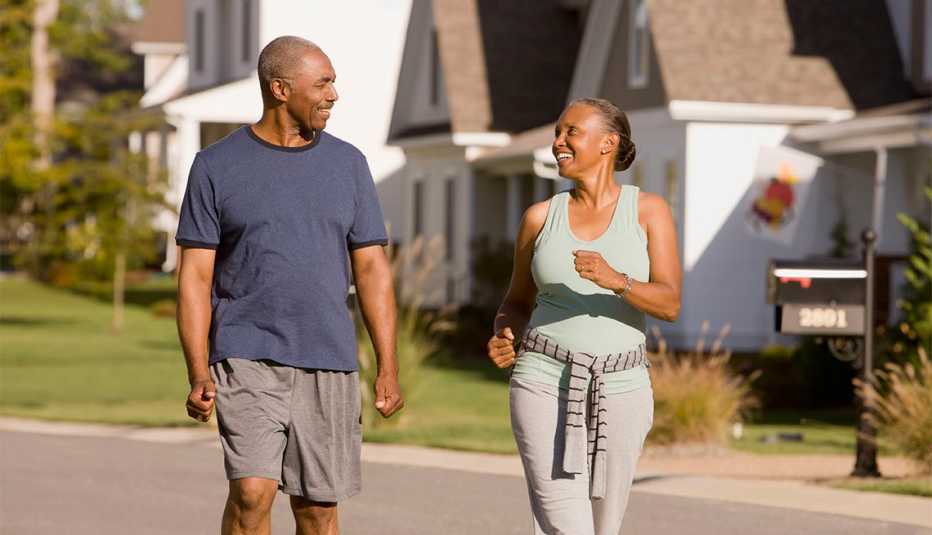AARP Hearing Center


Love to walk but haven't been noticing any real results? It may be time to take your walking — whether you're outdoors in the park or indoors on the treadmill — up a notch with these simple tweaks to your routine.
Be sure you have the right sneakers. Before you think about powering up your walking routine, take a glance at your shoes, advises Mark Fenton, author of The Complete Guide to Walking for Health, Weight Loss, and Fitness . “After a year of use, the foam cushioning wears out,” he explains. “If you use them every day, the cushioning wears out after six months.” And that's a problem since it's this foam that absorbs the impact from walking, protecting the feet, ankles and knees. When searching for a replacement, a good fit is key — whether you choose a walking or running shoe (both are good options). “You want to make sure your foot doesn't slip at all, and that the shoe itself does not bend easily through the arch (or mid-foot).” When in doubt, go to a local running store, where you can be assured of having someone help you with proper fit.
Tuck your tummy. After a short three- to five-minute warm-up of slow walking to get your muscles warmed up, start pulling in those abs. Doing so “locks in your core and aligns your shoulders over the hips,” says Leslie Sansone, a fitness instructor certified by the American Council on Exercise (ACE) and the creator of Walk at Home workouts. “This is the proper walking posture that helps keep your lower back protected.” Tucking in your tummy and pumping your arms back and forth, with each arm crossing the opposite side of your body, also helps to work your core, giving you more of a total body workout.

































































More on health
How to Find Time for Exercise
Building a fitness schedule — and strategies for sticking with it
Getting Exercise Just Got Easier
It’s as important as ever to stay active. Here are 20-plus fitness videos to get you started.